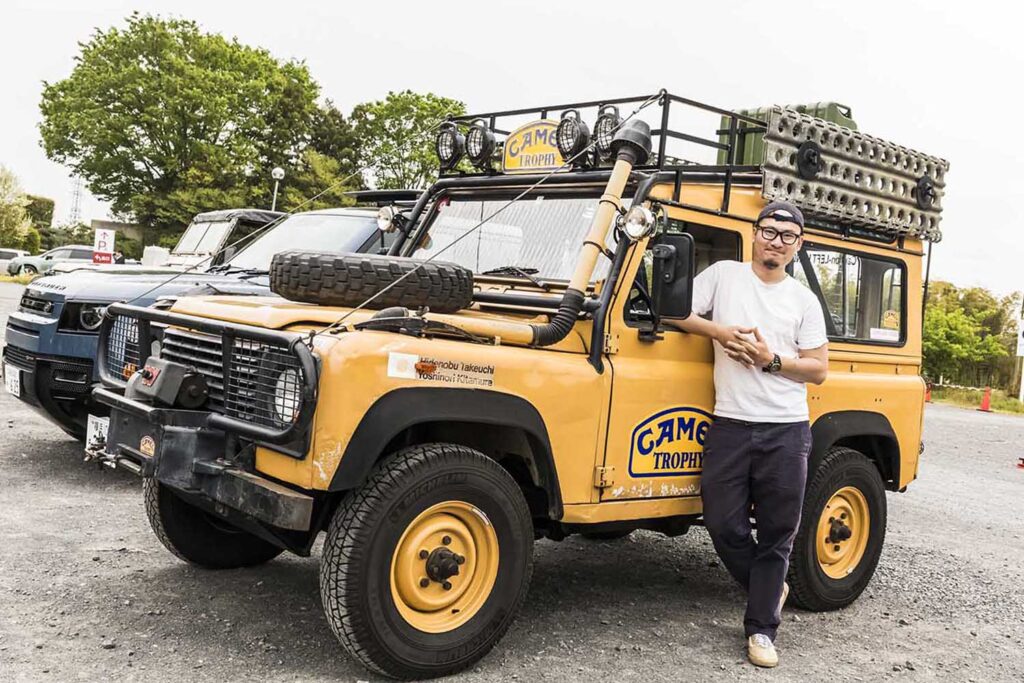Actual competition vehicles used by the Japanese team
Among the many unique Land Rover Defenders on display, from rare limited editions to custom cars, one that stood out was the camel-colored Defender 90. We thought it was a replica of a common Camel Trophy car, but when we asked the owner about it, he told us that it was a real Camel Trophy participant. We asked him to introduce us to the real equipment.
A real competition vehicle that participated in the Camel Trophy
Around 50 new and old Land Rover Defenders gathered at the Defender Collection Owners Meeting held on April 20, 2024, at a special venue in Saiboku, Saitama Prefecture. One that caught our attention was a yellow Defender 90 equipped with authentic equipment.
The Defender is available in three wheelbases (90, 110, and 130 inches), each with body variations such as station wagon and pickup. The one introduced here is based on the 90 and is equipped with authentic equipment. We thought it might be a custom vehicle that pays homage to the famous Camel Trophy vehicle, so we asked the owner, Mr. Cho (張), and he replied,
“This is not a replica, this car actually competed in the 1986 Camel Trophy as Team Japan!
Many interesting details unique to race specs
Mr. Cho, who also owns a Defender 110, says that this car is the very car used by the Japanese team in 1986, and that he acquired it two years ago.
Basically, Land Rover lends out the cars that compete in the Camel Trophy, but this particular car made it to Japan after the 1986 Camel Trophy when the Japan 4-wheel Drive Vehicle Association brought the race car back to Japan from Australia. After that, the car was stored in a warehouse, and Mr. Cho acquired it.
It is based on a production Defender 90, but it is loaded with details typical of a competition car, such as a roll cage installed in the rear of the car, a huge roof rack mounted on the roof, and a kill switch installed at the foot of the passenger seat.
Researching, reproducing & preserving the style of the time
When he acquired the car, most of the parts were as they were in those days, but as expected, due to the passage of time, the roof carrier was corroded and some of the details from those days were lost. Mr. Cho then thoroughly collected documents and photos from that time, and corrected the details. For example, the roof carrier was a one-off fabrication, but there were no drainage holes because of the priority on strength. This was the reason for the corrosion. Therefore, the badly corroded legs were newly rebuilt in the same shape. The front end of the carrier and the front end of the hood were connected by a wire, which was also missing, so they recreated it.
After acquiring the car in this way, he spent a year repairing various parts and recreating details, and last year, the car finally took on its current appearance. Mr. Cho would like to continue to study the condition of the car as it raced and recreate it as it was in those days.
